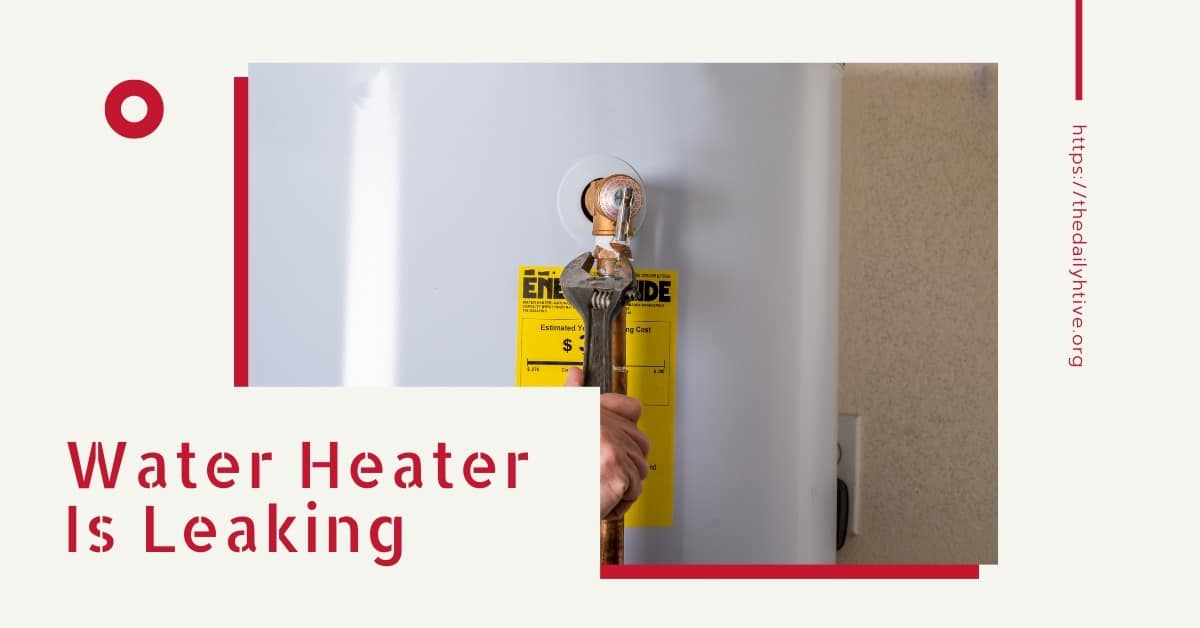If you find your water heater leaking, you need to take action immediately. There are a few actions to follow in order to prevent more serious problems. So, what to do when your water heater is leaking?
It can be difficult to tell for sure whether a water heater is leaking or not because it is often located in a place that people rarely frequent. Let’s now do some troubleshooting water heater leaking.
Before you spend any time or money on fixing a suspected water heater leak, understand that it is quite normal to get some build-up of condensation on the water tank and the pipework, particularly during cold, damp weather. This can cause wet patches to appear around the bottom of the water tank.
For this reason, it’s important that you first thoroughly visually inspect the water heater before going to the expense of calling a plumber simply because of a suspected water heater leak.
General Moisture Or Genuine Water Leak?
Suppose you find general moisture over the entire tank and on the pipework, which is dripping onto the floor, causing a puddle or dampness around the water tank. In that case, the good news is that you probably don’t have anything to worry about. It’s most likely just condensation.
However, water from condensation should not be excessive. If you are getting excessive water around the tank, this indicates a more serious problem, i.e. a leak.
You can remove the excess moisture from condensation with a dry towel, and you may want to leave a towel on the floor around the tank to prevent the floor from getting wet.
What to Do if You Notice Your Water Heater Leaking
If you find that the leak is coming from a specific area on the tank, the next thing you will need to do is to pinpoint where the water is leaking from. Is the leak coming from the top of the tank, the side panel, the relief valve, the drain valve or the bottom of the water heater?
Once you confirm that your water heater is leaking, before you do anything else, make sure that you turn off the power supply.
- Turn Off Electric Water Heater.
To turn the power off on an electric water heater, you’ll need to locate your circuit breaker panel and shut off the switch to your water heater. - Turn Off Gas Water Heater.
If you have a gas water heater, often you will find a dial near the bottom of the tank. Simply turn it to either position pilot or off.
If you have a serious leak, you will need to turn off the cold water supply. If you have a slow leak, leave the water supply turned on, as this will help you identify the source of the leak.
The next step is to isolate and troubleshoot the water heater leaking.
A word of caution! Care should be taken when troubleshooting leaks in water heaters. Water leaking from pipes or the tank can be extremely hot and cause nasty burns and scolds.
Water Heater Leaking From Top
It is best to start troubleshooting water heater problems by checking the plumbing above the water heater and then working down from there.
Water heater leaking from the top can quite easily make its way down the tank and any insulation you may have, making it appear like the leak is coming from inside the tank.
Therefore, check the water flex lines or the inlet and outlet pipes at the top of the tank for any water.
Flex lines are a common cause of leaks as they can go bad. Replacing these can extend the life of your water heater by several years and avoid having to replace your heater sooner than necessary.
Tighten any connections that you find are lost, as that may fix the problem.
However, you may find that water is escaping from the connectors themselves (water heater nipples). Check the insulation tape (nylon or Teflon) which lines the inside threading. Replacing the insulation tape may help renew the seal and prevent any leaking.
If you do any work yourself, make sure that you turn off the water and power supply as mentioned above. Also, drain the water tank to below the level of the leak by opening a hot water faucet to allow air into the system, which will allow water to drain from the water tank via the drain valve.
Leaking From the Side of the Tank
Suppose water heater is leaking from the side of the tank, specifically from the discharge tube that runs down the side towards the ground. In that case, the possible causes of this are high temperature, high water pressure, or thermal expansion.
It could also indicate a defective pressure relief valve located at the top of the side of your water heater.
Water Heater Leaking From Relief Valve
If your water tank is overheating or has too much pressure in the system, this could cause the Pressure Relief Value (TPR) to leak.
A leaking TPR is a much more serious problem that you should fix as soon as possible because too much temperature and pressure build-up could cause a water tank explosion.
Try turning down the temperature at the thermostat, allowing the water to cool, and then observing once the water has had time to cool slightly whether this stops the leak.
If the TPR is still leaking, then the problem is most likely a faulty valve.
To check for a faulty relief valve, you will need to remove the discharge tube, which extends down towards the ground. Next, you’ll need a small bucket to capture water released from the valve when you open it.
To open the relief valve, you simply pull back on the lever gently.
Caution: Ensure that the water has cooled down sufficiently in the tank before attempting this test to avoid potentially scolding your hands or face from water splashback.
It’s suggested that you test the water temperature first while the discharge tube is still fixed to the TPR. Then allow some water to discharge down the tube and into a bucket by gently pulling back on the lever to check the water temperature.
Once you have tested that the water temperature is cool enough, you will want to gently pull back on the TPR lever and allow approximately 2 cups of water to discharge into a small container or bucket. Then release the TPR valve to shut off the water.
If, after closing the valve, you notice that the TPR is still leaking water, then you have a faulty pressure relief valve, which will need replacing.
We would recommend that you call a qualified plumber to replace defective TPR.
Water Heater Leaking From Drain Valve
The drain valve, located near the bottom of the tap, frequently deteriorates, causing water to leak. You can simply cap it with a hose cap to fix this problem.
However, a better solution would be to replace it completely. To do this, you will need to turn the power off, shut the water supply and drain the tank.
Water Heater Leaking From Bottom
When you found water heater leaking from bottom, you should check for rust and corrosion around the tank and the connections to the inlet and outlet pipes for signs of general corrosion inside the tank.
Suppose you find that the water leak is concentrated at the bottom of the tank, and there is no visible evidence that water is running down the tank from a leak further up on the water heater. In that case, this indicates that the likely problem is internal, and the only fix is a replacement water heater.
The replacement of a water heater is a skilled job, and you should not attempt the work yourself unless you are a skilled and licensed plumber.
DIY repair and troubleshooting are worth trying, but if it gets a bit too technical, seeking some assistance may be essential. If you don’t want to deal with a water heater leaking, make sure you are doing routine maintenance.






